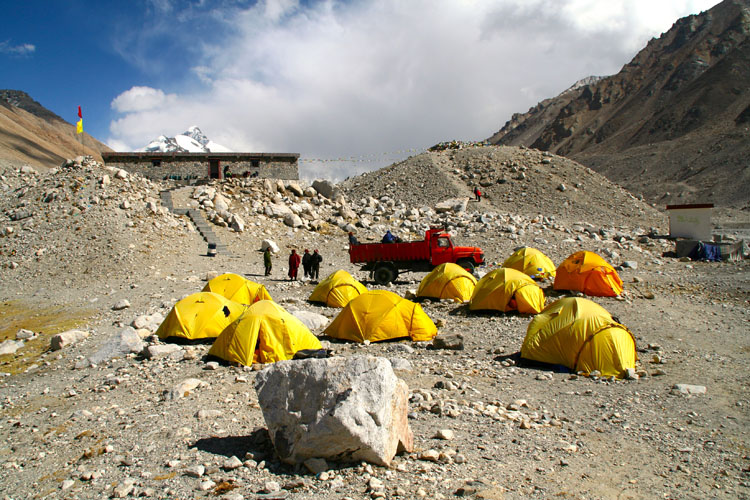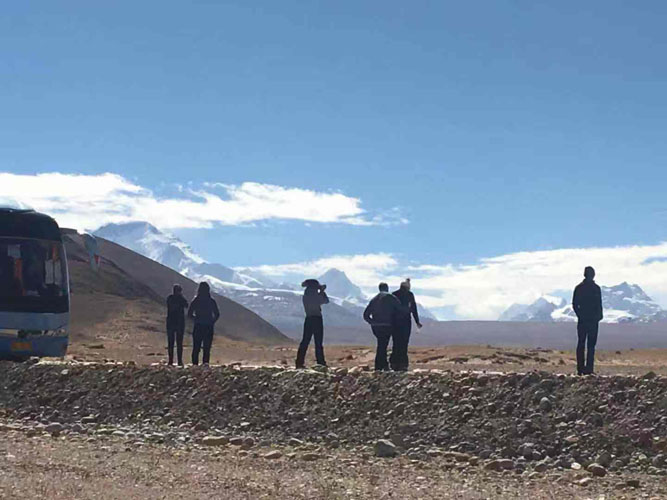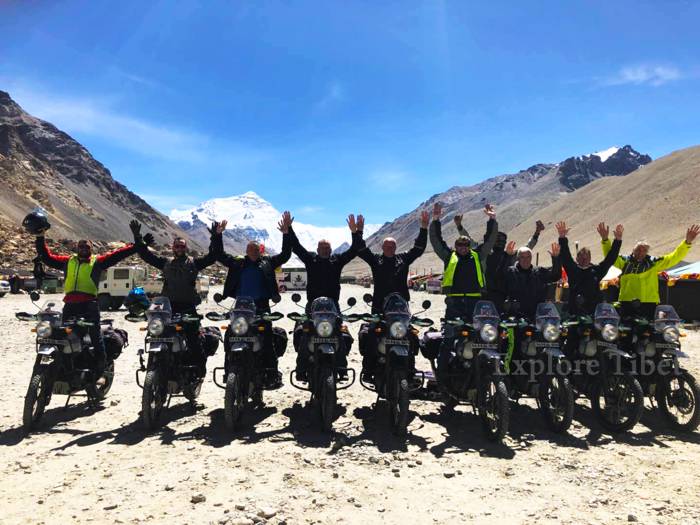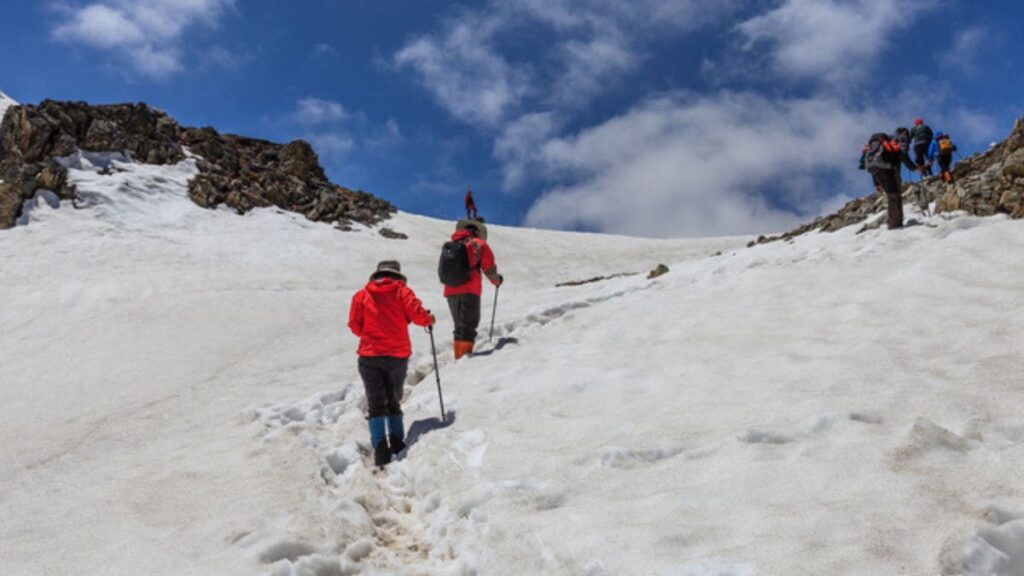Mount Everest, known as “Qomolangma” in Tibetan, meaning “Mother Goddess of the Universe,” stands as a beacon for adventurers, trekkers, and dreamers worldwide. The north face of Everest, accessed from Tibet, presents a journey that is as much about the inward exploration of one’s limits and potential as it is about witnessing the grandeur of the world’s highest peak. This blog post delves into the experience of visiting the Everest Base Camp (EBC) in Tibet, a journey that encapsulates the essence of high-altitude adventure, set against the backdrop of the Himalayan giants.

The Journey Begins: Lhasa to Everest
The adventure to Everest Base Camp on the Tibetan side often begins in Lhasa, the heart and soul of Tibet. This allows travelers to acclimatize to the high altitude and immerse themselves in the rich tapestry of Tibetan culture, visiting iconic sites such as the Potala Palace and Jokhang Temple. The journey from Lhasa to EBC unfolds over several days, traversing the Friendship Highway, a route famed for its stunning landscapes and cultural significance.
The Scenic Route: Landscapes Beyond Imagination
The drive to Everest Base Camp is an odyssey through some of the most breathtaking scenery on the planet. Travelers pass through traditional Tibetan villages, over high mountain passes adorned with colorful prayer flags, and alongside turquoise lakes that reflect the might of the Himalayas. The route offers panoramic views of a range of Himalayan giants, but none as awe-inspiring as the first glimpse of Mount Everest itself, a moment that remains etched in the memory of every traveler.

Rongbuk Monastery: A Spiritual Haven
Near Everest Base Camp lies Rongbuk Monastery, the highest monastery in the world, which offers a unique blend of spiritual serenity and stunning natural beauty. The monastery provides a vantage point that offers unparalleled views of Everest, making it a perfect spot for reflection and meditation. The presence of the monastery adds a layer of spiritual significance to the journey, reminding travelers of the deep cultural and religious connections that the local communities have with the natural world.
Everest Base Camp: The Dream Realized
Reaching Everest Base Camp in Tibet is a milestone, a dream realized for many. Situated at an elevation of 5,200 meters (17,060 feet), the camp offers a close-up view of the north face of Everest, presenting a perspective that is vastly different from the more commercialized south side of Nepal. The stark beauty of the landscape, characterized by its rocky terrain and the imposing icefalls, creates a sense of being at the edge of the world.
The North Col: Gateway to the Summit
For those who venture beyond Base Camp, the North Col, a sharp-edged pass carved by glaciers, serves as the gateway to the higher reaches of Everest. While summiting Everest is a feat reserved for experienced climbers, the journey to the North Col is an achievable goal for many, offering a deeper insight into the world of high-altitude mountaineering.

Sustainability and Respect: Traveling with Purpose
Traveling to Everest Base Camp in Tibet is a privilege that comes with the responsibility of preserving the fragile ecosystem and respecting the local culture. Sustainable travel practices are crucial, including minimizing waste, respecting wildlife, and engaging with local communities in a manner that supports their economy and way of life.
Challenges and Rewards: The High-Altitude Experience
The journey to Everest Base Camp in Tibet is not without its challenges, chief among them being the altitude. Acclimatization is key, as is a keen awareness of one’s physical and mental health. The rewards, however, far outweigh the challenges. The sense of accomplishment, the breathtaking landscapes, and the profound sense of connection with nature and the local culture make this journey a once-in-a-lifetime experience.

Logistics and Planning: Making the Dream a Reality
Visiting Everest Base Camp in Tibet requires careful planning and preparation. Permits are necessary, as is a guide, as independent travel in the region is not permitted. Choosing a reputable tour operator, experienced in high-altitude travel in Tibet, is essential. The best times to visit are from April to June and September to October when the weather is most favorable.
Beyond Base Camp: Exploring the Tibetan Plateau
The journey to Everest Base Camp offers the opportunity to explore the broader Tibetan Plateau, with its vast landscapes, rich cultural heritage, and unique wildlife. Side trips to places like the ancient city of Shigatse, the serene waters of Yamdrok Lake, and the historic Sakya Monastery enrich the travel experience, offering a broader perspective on Tibet’s natural and cultural wonders.
The Return: Carrying Everest in the Heart
The return journey from Everest Base Camp is a time for reflection, as the experiences and lessons of the trek begin to settle in. The mountain, with its towering presence and timeless allure, leaves a lasting imprint on the heart and mind, inspiring a sense of resilience, humility, and a deepened appreciation for the natural world.

Conclusion
The journey to Everest Base Camp in Tibet is more than just a trek; it is a pilgrimage to one of the most iconic natural wonders of the world. It challenges the body, stimulates the mind, and nourishes the soul. The raw beauty of the Himalayas, the cultural richness of Tibet, and the personal journey of discovery combine to make this adventure an unforgettable experience.
In the shadow of Everest, amidst the vastness of the Tibetan Plateau, travelers find not only a sense of adventure but a deeper connection to the earth and a renewed sense of purpose. The journey to Everest Base Camp in Tibet is a testament to the enduring allure of the world’s highest peak, a beacon for explorers who seek to venture beyond the horizon and discover the extraordinary.

[…] The clear blue skies and crisp air provide unparalleled views of the Himalayas, including the majestic Mount Everest, which stands as a sentinel overseeing this mystical […]
[…] as the Potala Palace, Jokhang Temple, and Barkhor Street. Other must-visit destinations include the sacred Mount Everest Base Camp, where travelers can witness the awe-inspiring beauty of the world’s highest peak up close, and […]
[…] travelers embark on their journey to Mount Everest, it is essential to recognize the fragile ecosystem of the Himalayas and the need to preserve its […]